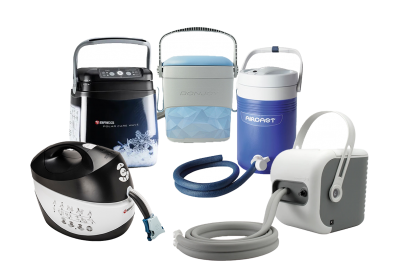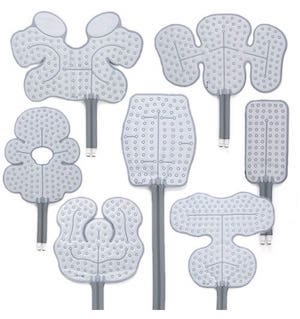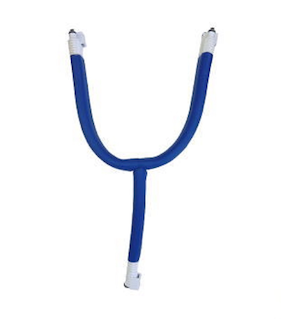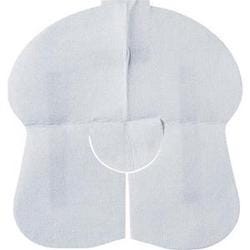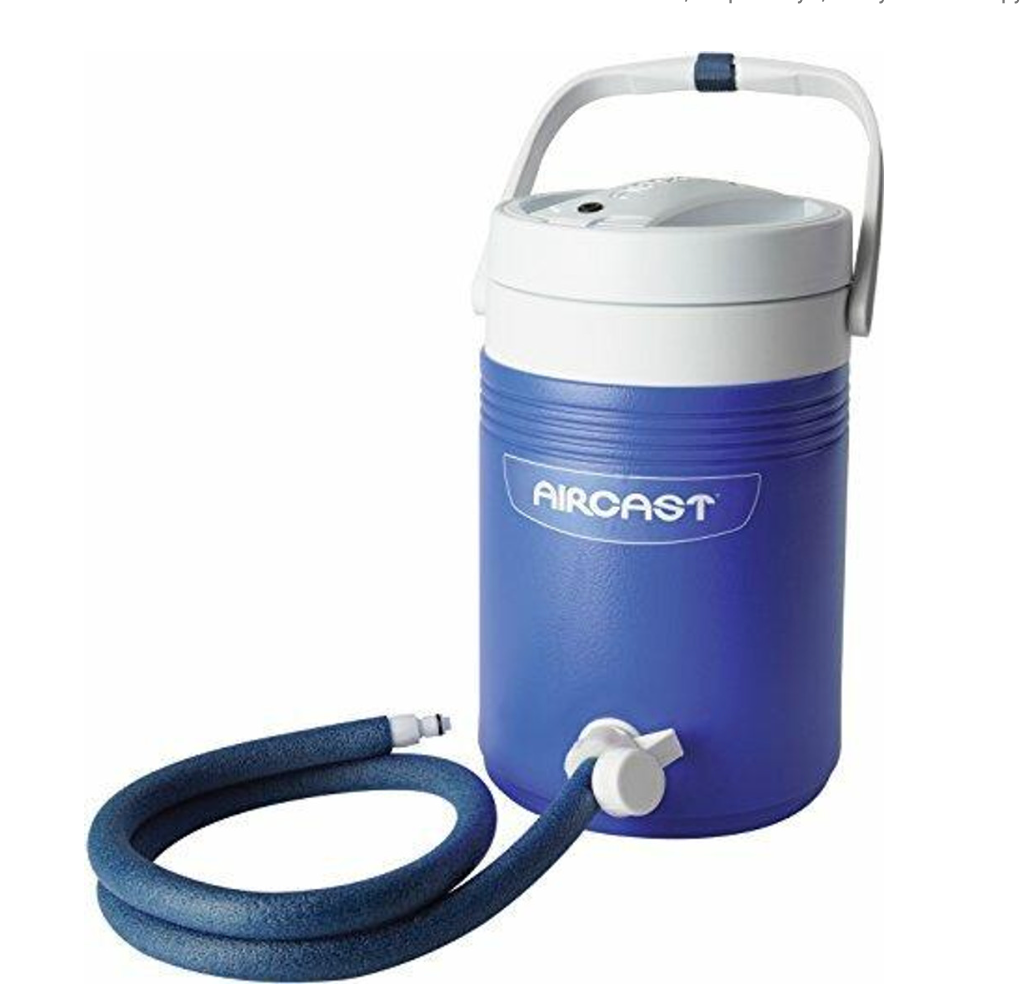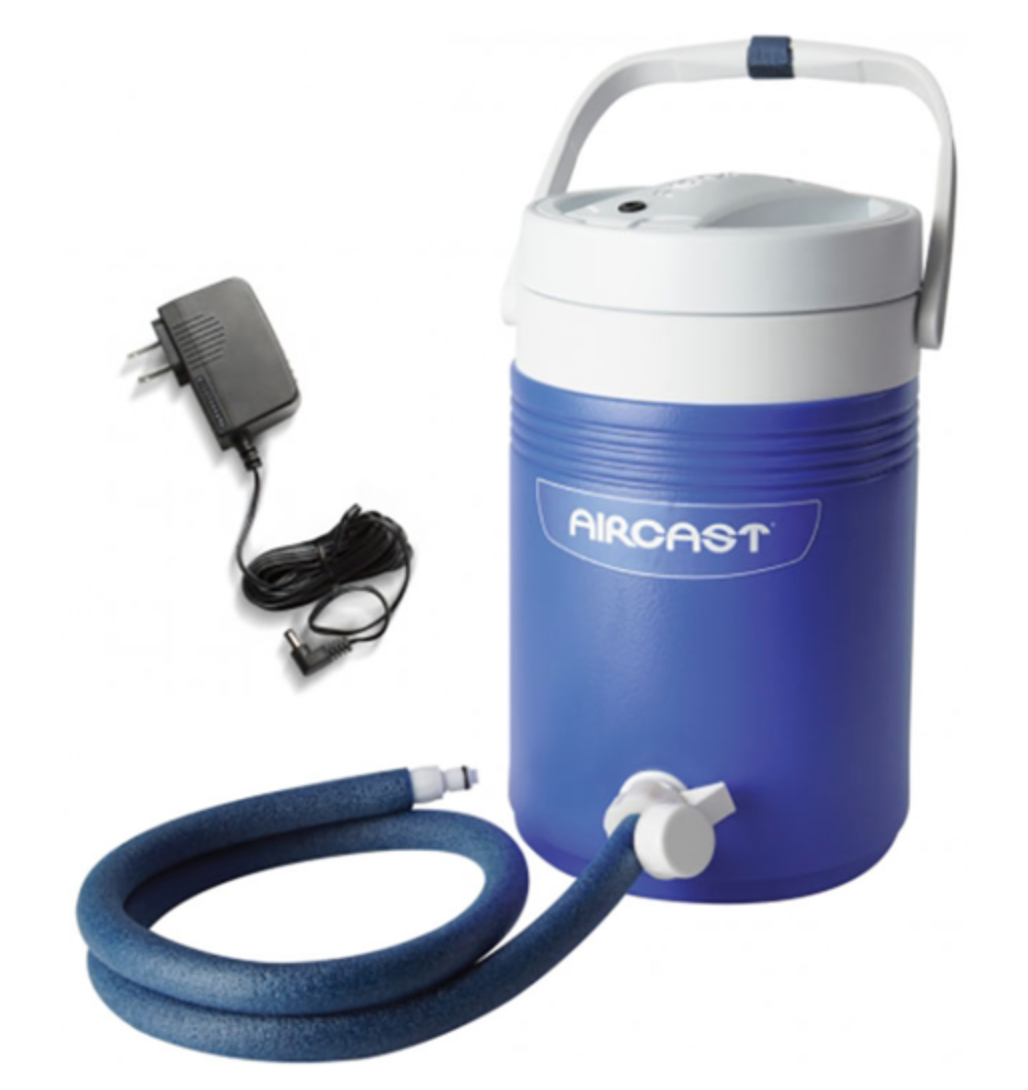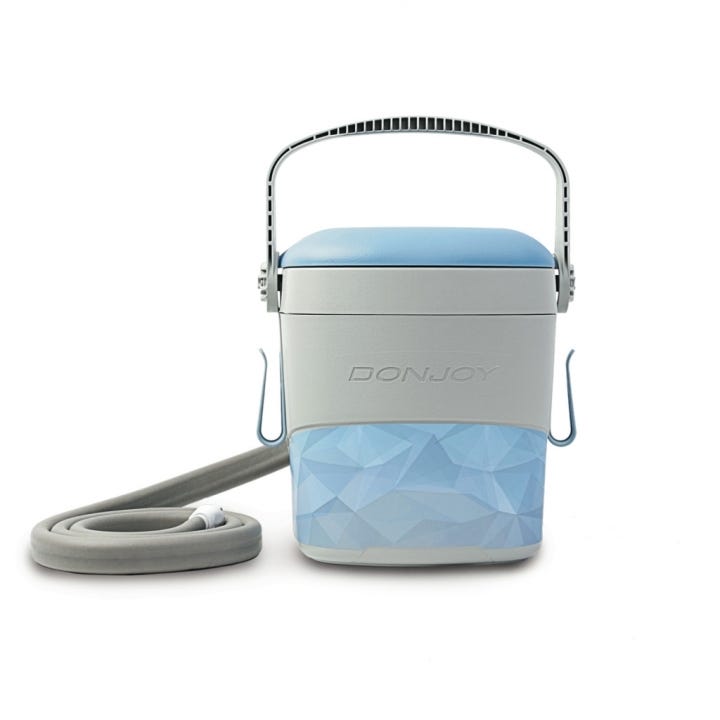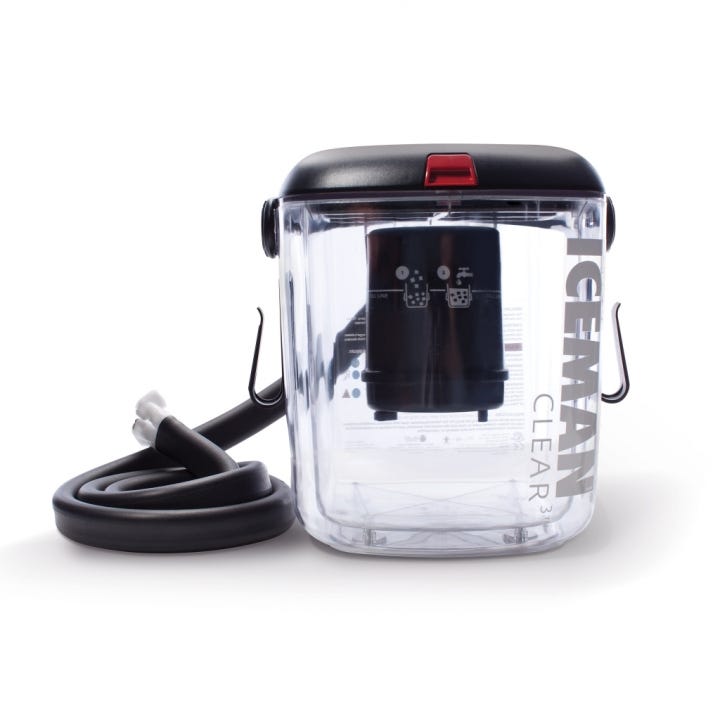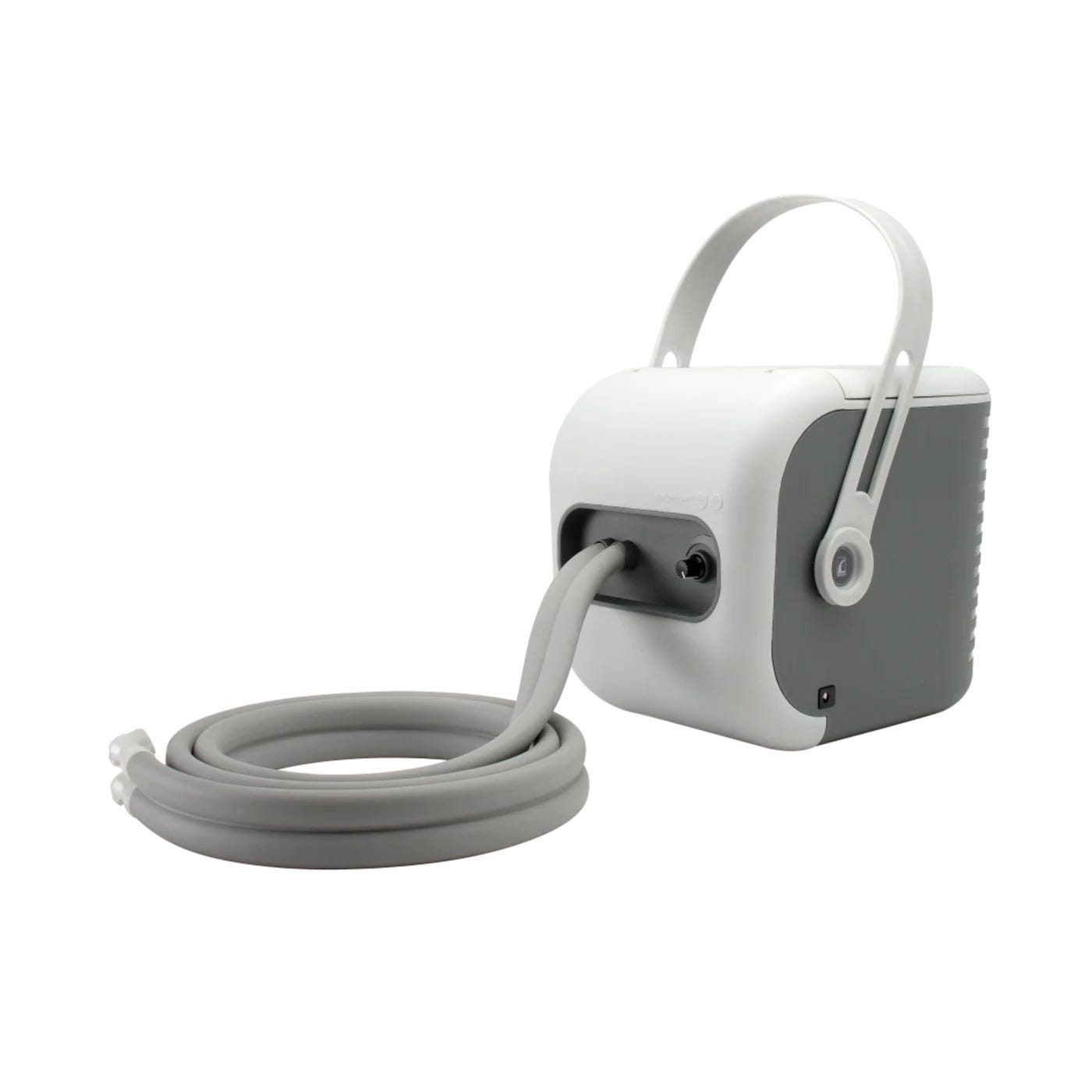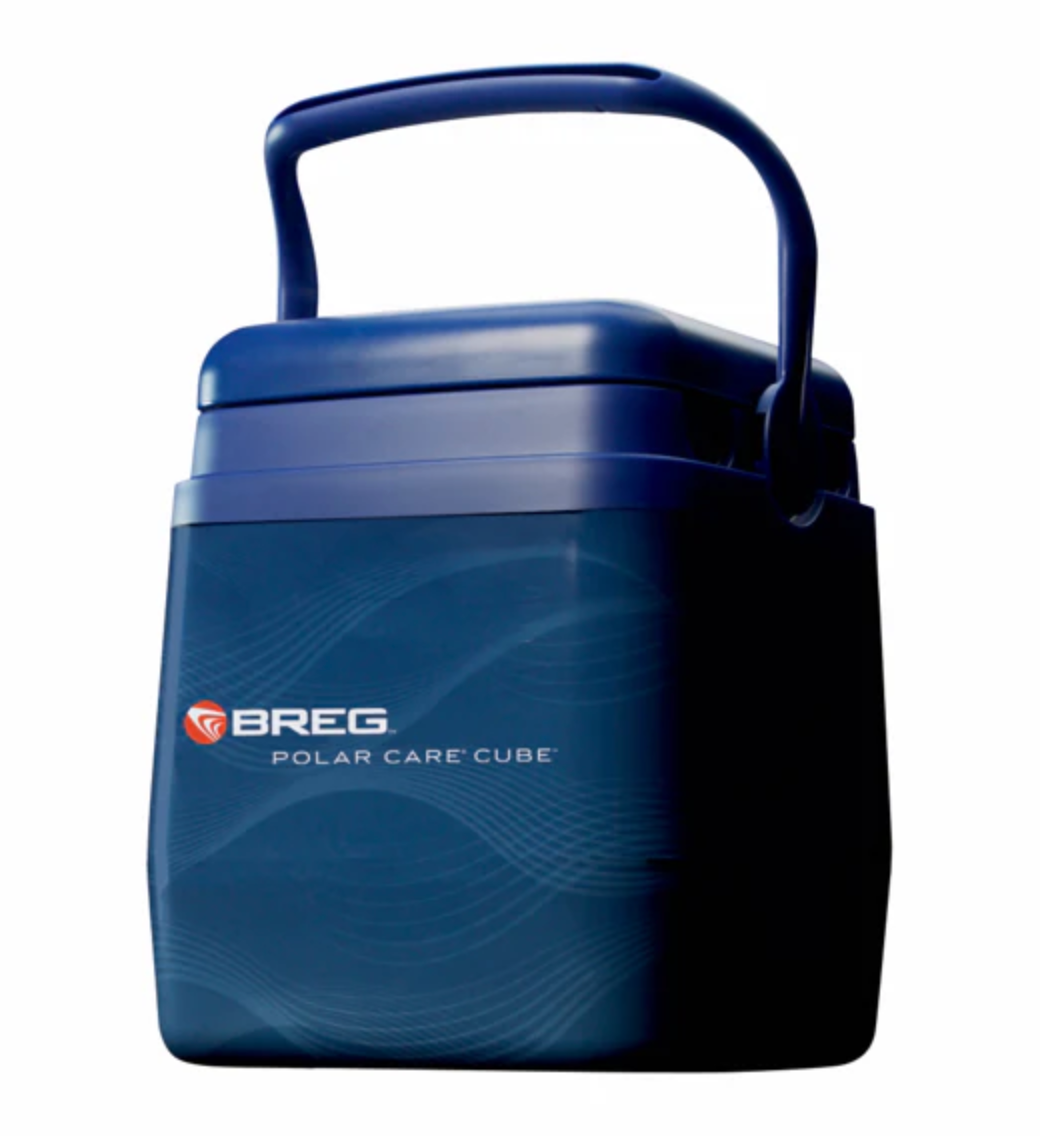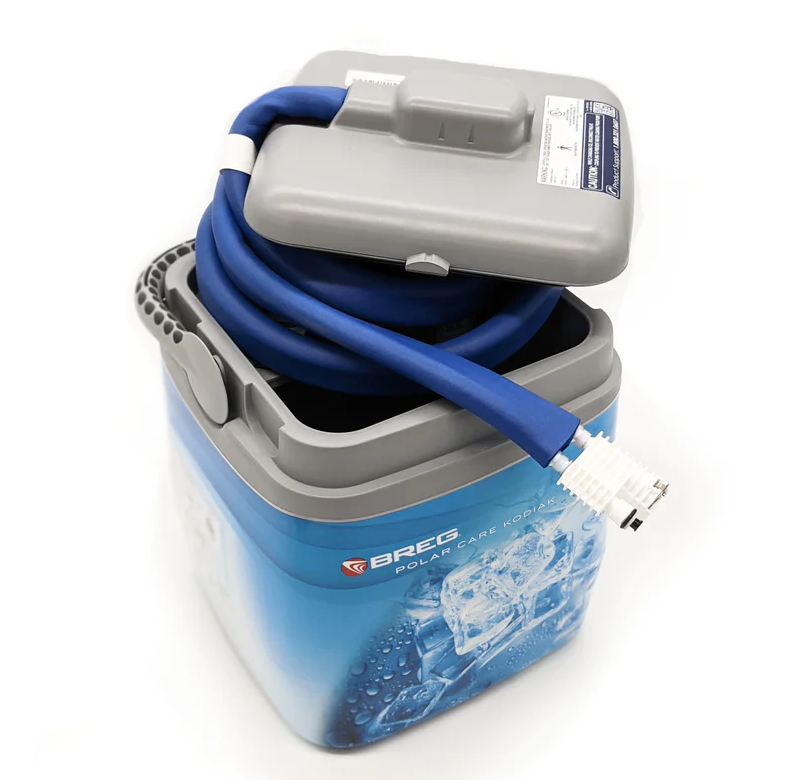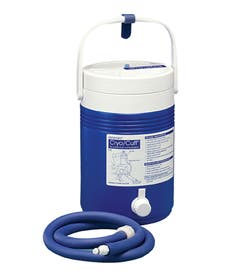Reviewed for 2024
What's In This Post
Click to jump to section
- Cold Therapy, Where To Start?
- Most Frequently Asked Questions
- What Is Cold Therapy?
- How Does Cold Therapy Work?
- What Is Cold and Compression?
- Types of Pads, Using Two Pads, Barriers
- Cold Therapy While Sleeping
- Most Important Factors
- System Options, Our Reviews and Tips
- Aircast Cryo/Cuff
- DonJoy Iceman (Classic3, Clear3)
- Ossur Cold Rush
- BREG (Cube, Kodiak, Glacier, Wave, VPulse)
Interested in a Cold Therapy Machine but not sure where to start?
We've got you covered! In this guide we discuss all of the benefits of cold therapy, and review the most popular cold therapy options available on the market today. We also offer our opinion on what we like about each product based on our experience selling thousands of cold therapy machines, cryo cuffs, and cold therapy wraps. This guide will help you be more confident that the cold therapy unit you pick best matches the features you need, while staying within your budget. If you want to skip reading this post and just ask us for a recommendation you can contact us here!
Cold Therapy Systems - most frequently asked questions by our customers:
What is cold therapy?
Cold therapy, also known as cryotherapy, is a therapeutic technique that involves applying a cold temperature to an injured or painful area of the body in order to reduce inflammation, pain, and swelling. This can be done using ice packs, cold compresses, or specialized cold therapy devices. Cold therapy works by constricting blood vessels in the affected area, which reduces blood flow and inflammation, and can help to reduce pain.
It is commonly used post-surgically to reduce pain and swelling, and to speed up the healing process. It is often prescribed by healthcare providers as a safe and effective way to manage pain without the use of opioids or other pain medications. After surgery, cold therapy may be applied using cold therapy machines that deliver a consistent and controlled cooling effect to the affected area. These devices are filled with ice / chilled water, and can be wrapped around the surgical site to provide targeted pain relief. Cold therapy can be particularly beneficial after orthopedic surgeries such as joint replacements, where swelling and inflammation can be a major concern.
Cold therapy can also be used to treat acute injuries such as sprains, strains, and bruises, as well as chronic conditions such as arthritis and tendonitis. Cold therapy is generally considered safe and effective, but it should be used with caution in people with certain medical conditions, such as Raynaud's disease or circulation problems.
Overall, cold therapy is a non-invasive and drug-free way to manage pain and inflammation after surgery, and can help to improve recovery time and overall outcomes. However, it is important to follow the advice of your healthcare provider when using cold therapy post-surgery, as it may not be appropriate for all patients or all types of procedures.
What are the benefits of cold therapy?
Cold therapy machines are most commonly used post-injury and post-surgically where long duration swelling is present. Applying cold/ice to a joint can reduce pain by decreasing the fluid that pools in the joint. Fluid accumulates in the surrounding tissues when there is an increase of blood flow in an area of the body (which occurs when you bump into something or have surgery). This excess pooling of fluid is known as edema (swelling), which increases pressure and pain in the joint. Restricting the amount of blood flow (through blood vessel constriction) can assist with reducing this swelling. Note, your body naturally has the ability to increase or decrease blood flow through the blood vessels, which is typically done to regulate body temperature. For example, in the cold your blood vessels will constrict to maintain better core temperature, whereas in the heat your vessels will dilate to let off excess heat. The constricting of the blood vessels can be encouraged with the application of cold (ice pack, or cold therapy device) to decrease the flow of blood to an injury site. By applying ice right after a surgery, you can reduce the amount of blood pooling at the injury site, by constricting the blood vessels, to reduce the amount of long-term swelling. As an added benefit, the use of cold therapy may also help reduce the need for narcotic pain medication during your recovery (since you are already reducing the pain using cold therapy).
Why use a cold therapy device over an ice pack?
How do cold therapy devices work?
There are two primary types of cold therapy systems. The main differences are how the devices get the cool water from the cooler to (and from the pad), devices are either non-motorized (gravity fed) or motorized, and they have one or two hoses that connect the cooler to a cold therapy pad, that you place on the affected body part.
Water + Ice
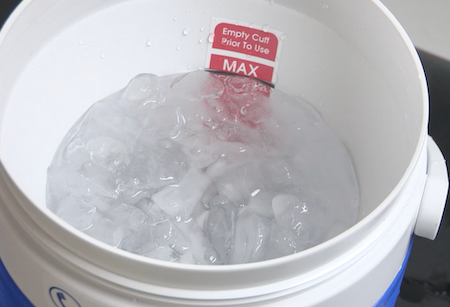

All cold therapy devices include a resevoir (cooler) that you fill with ice and water (There is an indicator line on the inside of the cooler to show you the correct water/ice ratio to make sure you achieve the correct cold water temperature). Pro tip, freeze water bottles and use those as a substitution for ice cubes.
Gravity Fed
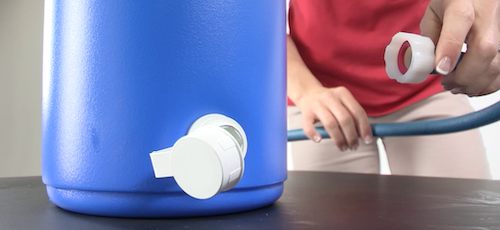

Non-motorized devices use gravity (you lift and lower the cooler to fill the pad). For example, the Aircast Cryo/Cuff devices require you to lift and lower the cooler for circulation as it is gravity operated. This device only has one hose going from the cooler to the pad so the water is either flowing from the cooler to the pad, or the pad to the cooler, with no ability for a constant circulation.
Motorized
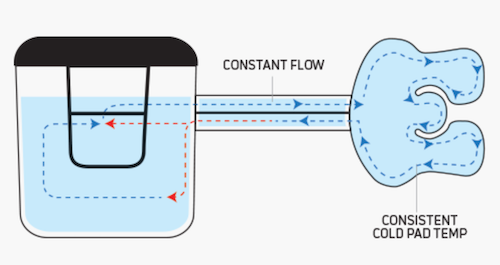

Motorized devices automatically provide constant recirculation of cold water between the cooler and the pad. These devices use two hoses; where one hose is sending water to the pad, and one is returning water to the unit. Within this motorized category there are two ways the motor is set up to circulate water. The first, which the DonJoy IceMan series of devices use is called a dual pump recirculation. These devices combine some of the return water that was just in the pad (which has been warmed up slightly from your body heat) with the cold water that was sitting the cooler for a more comfortable constant cold. This prevents freezing inlet temperatures in the pad. The other circulation option, offered by the Breg (Wave, Cube, Kodiak, Glacier, VPulse) and Ossur Cold Rush devices, take water straight from the cold cooler and circulate that throughout the pad. The Ossur device has an adjustable flow dial to adjust temperature, and the Polar Care Wave have two flow rate settings for flow.
What are the benefits of compression?
The final difference in devices is compression. Some devices such as the Breg VPulse, and Breg Wave, inflate the pad (with air pressure) to apply medical grade compression to a wound or injury site. The compression is applied intermittently (on/off) in time cycles.
Applying intermittent compression to the wound site can be an added benefit to accelerate your recovery depending on your condition (check with your doctor first). By using compression on the wound (or injury) site, you are pushing fluid away from the joint to allow for a reduction in swelling. This can be used in addition to cold therapy to increase circulation in the joint by further reducing the pooling at the joint. The Breg VPulse and Breg Wave devices offer cold therapy pads that include medical grade compression.
Compression is also helpful if you are having a bilateral hip or knee operation (or other procedure where you may be less likely to get up and move around post-operatively) and therefore at higher risk of developing a blood clot, called DVT (Deep Vein Thrombosis). The Breg VPulse has an add-on feature for DVT Prevention using compression Calf Pads. These pads operate on a one-minute cycle where for thirty seconds one pad will provide compression to the left calf muscle, followed by thirty seconds of compression to the right calf muscle. This is to encourage blood flow of the lower limbs after surgery. It is always best to follow the exercise advice of a physiotherapist to promote continuous blood flow in the limbs after surgery. The DVT compression calf pads may be an additional option for you to increase circulation. Please note, it is up to your physician to determine based off your medical history if compression is appropriate for you as individuals with a history of blood clots should not use compression.
What is the difference between a universal pad and a body part specific pad?
A universal pad is a generic shape that can be used in multiple locations and in various orientations. Body part specific pads are designed with that body part in mind for best coverage and ease of application. Check out all of our cold therapy pads here.
Can I use two pads at once?
Yes! Some units have the capability of connecting two pads at once. A purchase of a Dual Pad Y Connector would be required in order for two pads to be used simultaneously together. All Breg, Ossur, and DonJoy IceMan devices have this capability. The only units that will not allow for dual pad connection are the Aircast Cryo/Cuff devices.
What is an insulation barrier?
All devices, except the Polar Care Wave and VPulse, require an insulation barrier to be placed between the pad and your skin to avoid the possibility of freezing of the skin. The Breg devices have an optional peel and stick sterile paper barrier for use with the Polar Care Cube, Kodiak, Glacier devices. You can use a thicker or thinner insulation barrier (ex: hand towel, shirt, pants) to adjust how much cold is applied to the joint. You can find the barriers here in our cold therapy accessories.
Can I use cold therapy while I'm sleeping?
Health professionals advise against you using these products while sleeping as we want to ensure you check on the surgical or injury site frequently to make sure you are taking the necessary breaks from icing so you do not freeze the skin.
What are the most important factors to consider when I am selecting a cold therapy system?
- Motorized or Non-motorized? Do you want the system to automatically circulate the cool water for you or are you OK to raise and lower the ice/water container every 20-30 minutes (with a gravity system to allow the cool water to flow in/out of the pad). Motorized units deliver more consistent cold therapy pad temperatures and are more convenient. Gravity fed units are more cost effective and can still deliver efficient cold therapy.
- Do you require medical compression in addition to cold therapy? Compression is a nice addition to cold therapy that can aid in healing, but it is not always needed or recommended. Make sure you consult with your doctor to see if compression would be beneficial for you.
- Does it fit within your budget? Cold therapy system prices range from under $200 (for the gravity fed versions) and up to $600+ for the systems with compression. If you think you will only use cold therapy for a single surgery maybe going with the less expensive option is the better choice (or perhaps you want to simply rent). However, if you want to have a device that might be used for multiple surgeries or ongoing for injury and pain relief, perhaps a higher priced unit (with more features) is a better investment. A quick note about cold therapy rentals: in our experience if you think you will need cold therapy beyond one month (which is very possible in most cases) then purchasing is usually the better option from a cost and value point of view.
Cold Therapy Systems - Our Review Of Each System, Why We Like It and Tips
Aircast Cryo/Cuff Gravity Cooler Cold Therapy:
Help speed recovery by applying cold therapy. The Cryo/Cuff Gravity Cooler provides chilled water to anatomically specific cuffs (ex: knee, shoulder, ankle). Despite the budget price the pads used for the Cryo/Cuff are high quality.
Aircast Cryo/Cuff IC Cooler Cold Therapy:
The IC Cooler offers all the benefits of the Gravity Cooler with the addition of a motorized lid to fill the pad with pressure for better contact between the pad and your body. The motor runs for 30 seconds, followed by a thirty second break. As there is only one hose going from the cooler to the pad, it is not a continuous flow of water between the pad and cooler. The compression feature should not be mistaken for medical grade compression (as offered by the Breg Polar Care Wave and Breg VPulse devices). Despite the budget price the pads used for the Cryo/Cuff are high quality.
DonJoy IceMan Classic3 Cold Therapy:
An OrthoMed To Pick. The New IceMan CLASSIC3 dual pump recirculation technology preserves and remixes chilled and warm water at a constant flow rate to maintain optimal temperature. This helps deliver more consistent cold therapy throughout the surface area of the entire cold pad for improved results and better comfort. The Wrap-On pads used by DonJoy IceMan are high quality and durable.
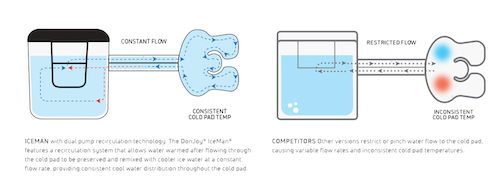

Features List:
- Motorized with Continuous Water Circulation
- Universal Pad Option
- 6-8 Hour Cold Therapy Treatment Time
- 6 Month Warranty
OrthoMed Tips:
- Use A Hand Towel As A Barrier Between Pad And Skin
- Purchase the Universal Pad XL with Extended Hose for Knee Application For A Bit More Coverage
- Freeze Water Bottles and Use Those As A Substitution For Ice Cubes
DonJoy IceMan Clear3 Cold Therapy:
It utilizes DonJoy’s recirculation system, which helps maintain more consistent and accurate temperatures than other competitive cold therapy units, in a pre-set configuration. The Wrap-On pads used by DonJoy IceMan are high quality and durable.
Features List:
- Motorized with Continuous Water Circulation
- Universal Pad Option
- 6-8 Hour Cold Therapy Treatment Time
- 6 Month Warranty
OrthoMed Tips:
- Use A Hand Towel As A Barrier Between Pad And Skin
- Purchase the Universal Pad XL with Extended Hose for Knee Application For A Bit More Coverage
- Freeze Water Bottles and Use Those As A Substitution For Ice Cubes
An OrthoMed Top Pick. Ossur Cold Rush boasts the highest ice-to-water ratio in the industry, adjustable flow rates and a quiet motor (30 decibels). The unit also has a friction fit lid to prevent spills and insulated walls to improve cooling. The Cold Rush unit is one of the highest quality systems on the market. The Cold Rush pads are good quality but not as durable as some other systems.
Features List:
- Motorized with Continuous Water Circulation
- Universal Pad Option
- Adjustable Flow Rate
- 6-8 Hour Cold Therapy Treatment Time
- 6 Month Warranty on Unit, 30 Day Warranty on Pads
OrthoMed Tips:
- Use A Hand Towel As A Barrier Between Pad And Skin
- Freeze Water Bottles and Use Those As A Substitution For Ice Cubes
Breg Polar Care Cube Cold Therapy:
The Polar Care Cube Cold Therapy System is simple and reliable. Its easy to use, compact design makes it great for clinic, hospital, and home use. With the addition of ice and water, you will enjoy 6-8 hours of effortless cold therapy. Breg Cube uses Breg's WrapOn pads which are well made and durable.
Features List:
- Motorized with Continuous Water Circulation
- Universal Pad Option
- 6-8 Hour Cold Therapy Treatment Time
- 6 Month Warranty
- Three size options available for Knee Application
OrthoMed Tips:
- Use A Hand Towel As A Barrier Between Pad And Skin
- Freeze Water Bottles and Use Those As A Substitution For Ice Cubes
Breg Polar Care Kodiak Cold Therapy:
The Polar Care Kodiak Cold Therapy System is the most convenient and versatile offering in Breg’s Polar Care line. Its easy to use, compact design makes it great for hospital, and home use. With the addition of a little ice and water, you will enjoy 6-8 hours of effortless cold therapy. Offering the only battery powered option on the market (with the purchase of the accessory), Breg ensures you can enjoy the benefits of cold therapy from anywhere: on the sidelines or in the backyard. Each battery pack comes with four replaceable AA batteries ready to power 10-14 hours of motorized cold therapy. In addition, the Kodiak pads have "intelli-flo" technology which helps the pad cool more evenly and effectively. The Intelli-Flo pads are also larger in size generally compared to the Cube WrapOn pads.
Features List:
- Portable (With The Purchase of The Battery Pack Accessory)
- Motorized with Continuous Water Circulation
- Universal Pad Option
- 6-8 Hour Cold Therapy Treatment Time
- 6 Month Warranty
OrthoMed Tips:
- Use A Hand Towel As A Barrier Between Pad And Skin
- We recommend the Kodiak over the Polar Care Cube for Hip Application (due to better coverage in the pad)
- Freeze Water Bottles and Use Those As A Substitution For Ice Cubes
Breg Polar Care Glacier Cold Therapy:
The Polar Care Glacier Cold Therapy System's easy to use, feature-rich design makes it a great choice for home use. With the addition of ice and water, you will enjoy up to 13 hours of cold therapy according to your own comfort level. The Glacier uses the same WrapOn pads as the Breg Cube.
Features List:
- Motorized with Continuous Water Circulation
- Universal Pad Option
- Adjustable Flow Rate
- 6-8 Hour Cold Therapy Treatment Time
- 6 Month Warranty
- Three size options available for Knee Application
OrthoMed Tips:
- Use A Hand Towel As A Barrier Between Pad And Skin
- Freeze Water Bottles and Use Those As A Substitution For Ice Cubes
Breg Polar Care Wave Cold Therapy and Compression:
Polar Care Wave combines motorized cold therapy with active compression in a simple and compact system, making it ideal for home use. Polar Care Wave is easily transported from the hospital to your home, extending the benefits of cold and compression.
Polar Care Wave is designed to reduce pain and edema to optimize recovery. Motorized cold therapy and compression devices, like Polar Care Wave, have also been shown to decrease narcotic use post-operatively. The Breg Wave uses it's only special pads (also used for the VPulse) that are designed to deliver cold and compression therapy. The pads are larger compared to normal 'cold' only pads from other systems, because they are designed to handle the compression, and they are generally more durable.
Features List:
- Motorized with Continuous Water Circulation
- Universal Pad Option
- Adjustable Flow Rate
- Ice Pouches Available
- Medical Grade Compression
- 6-8 Hour Cold Therapy Treatment Time
- 6 Month Warranty
Adjustable compression therapy settings: Regular, Low and Off
Regular = 50 mmHg average peak compression
Low = 25 mmHg average peak compression
Adjustable cold therapy settings: Regular, Low and Off
Colder ≥ 45°F average operating temperature of the pad
Cold ≥ 50°F average operating temperature of the pad
OrthoMed Tips:
- Use A Hand Towel As A Barrier Between Pad And Skin
- Freeze Water Bottles and Use Those As A Substitution For Ice Cubes
Breg VPulse Cold Therapy and Compression:
While supplies last! The Breg VPulse is one of our favorite recovery systems, offering high-quality performance and durability with the same pads as the Polar Care Wave. While the VPulse is set to be replaced by the Wave in 2025, we highly recommend grabbing one while you still can.
Looking for more compression than the Polar Care Wave? The VPulse delivers 60 mmHg of compression, helping to further reduce post-operative inflammation.
Additionally, the VPulse offers an optional DVT (Deep Vein Thrombosis) prevention feature with calf pads. If you're undergoing bilateral knee or hip surgery, you may be at a higher risk of DVT. Medical-grade compression to the calf muscles can help stimulate blood flow and reduce the risk of blood clots.
DVT calf pads are available as an accessory for purchase with your device!
Features List:
- Motorized with Continuous Water Circulation
- Universal Pad Option
- Adjustable Flow Rate
- Includes Freezable Water Jugs
- Medical Grade Compression
- 6-8 Hour Cold Therapy Treatment Time
- You can select which therapies to use: cold only, compression only, cold and compression
- 3 Month Warranty
Compression therapy settings
Single compression setting with 60 mmHg average peak compression
Temperature
The temperature of the therapy is designed not to drop below 42oF (5.5oC)
OrthoMed Tips:
- The System Comes With Two Sets Of Water Jugs That You Freeze And Insert Into the Device. One Container Can Be In The Freezer While The Other Is In Use And Swapped In/Out. So No Ice Is Required!
- Use A Hand Towel As A Barrier Between Pad And Skin
Reminder: Please consult your physician before purchasing to confirm you do not have any contraindications to use cold therapy or compression.

